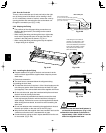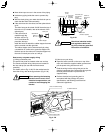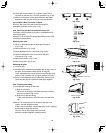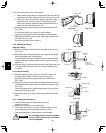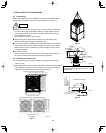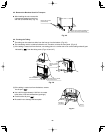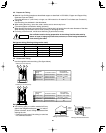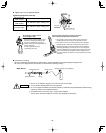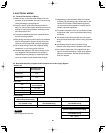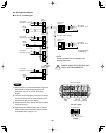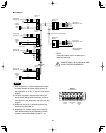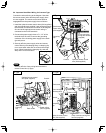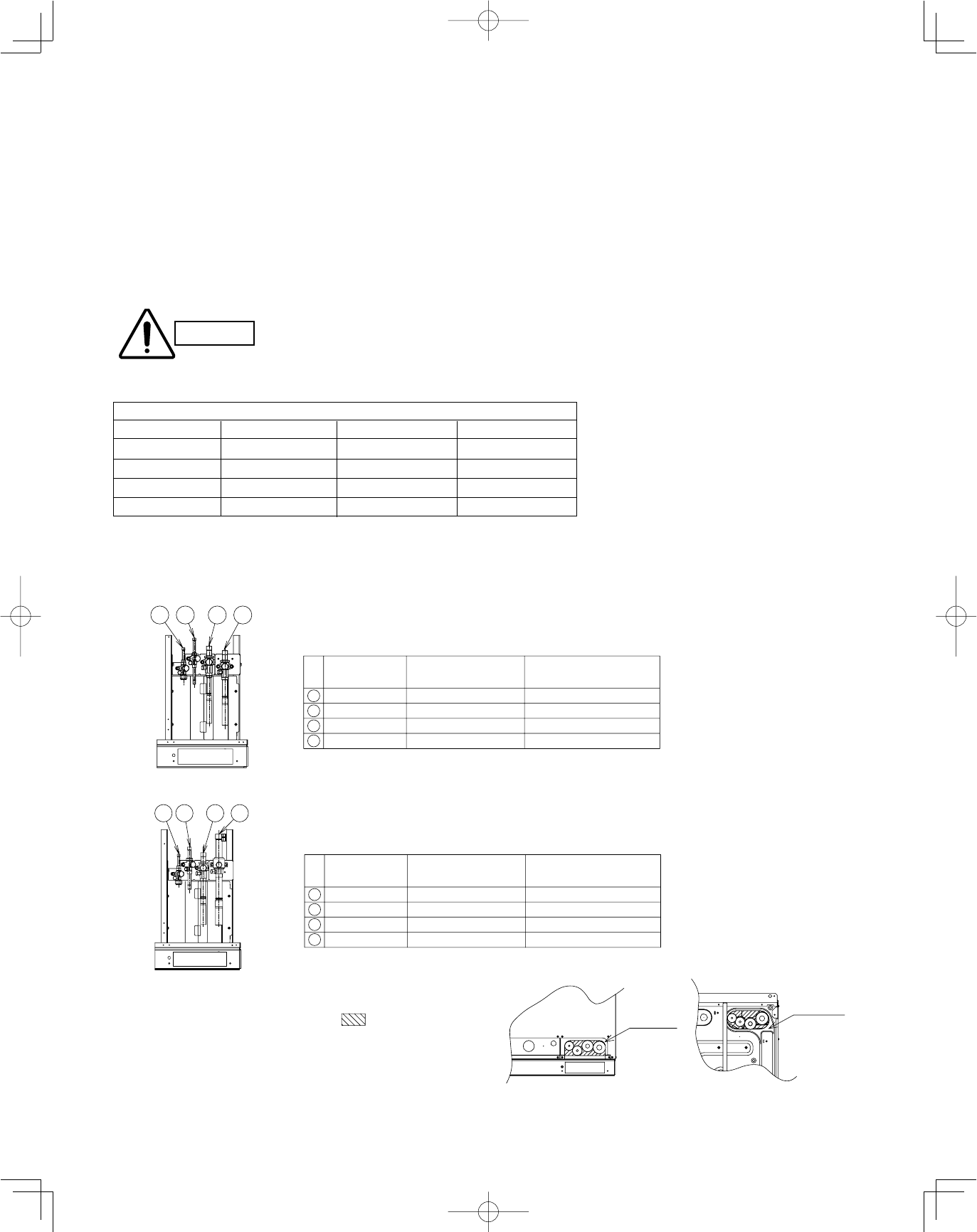
66
4-5. Prepare the Tubing
●
Material: Use C1220 phosphorous deoxidized copper as described in JIS H3300, “Copper and Copper Alloy
Seamless Pipes and Tubes.”
(For tubes that are ø1" (ø25.4 mm) or larger, use 1/2H material or H material. For all others use O material.)
●
Tubing size
Use the tubing size indicated in the table below.
●
When cutting the tubing, use a tube cutter, and be sure to remove any burrs.
(The same applies to distribution tubing (optional).)
●
When bending the tubes, bend each tube using a radius that is at least 4 times the outer diameter of the tube.
When bending, use sufficient care to avoid crushing or damaging the tube
●
For flaring, use a flare tool, and be sure that flaring is performed correctly.
CAUTION
Use sufficient caution during preparation of the tubing. Seal the tube ends by
means of caps or taping to prevent dust, moisture, or other foreign substances
from entering the tubes.
Refrigerant tubing (Existing tubing can be used.)
4-6. Connect the Tubing
●
Use the supplied connector tubing. (See figure below.)
1
2
34
09053 type (10 horsepower)
1
2
3
4
Refrigerant
tubing
Connection method
Use supplied
connector tube?
Suction tube
Brazed connection
Brazed connection
Brazed connection
Flared connection
Yes (ø3/4" m ø7/8")
Yes (ø5/8" m ø3/4")
Discharge tube
Balance tube
Liquid tube
No
No
1
2
34
014053 type (16 horsepower)
1
2
3
4
Refrigerant
tubing
Connection method
Use supplied
connector tube?
Suction tube
Brazed connection
Brazed connection
Brazed connection
Flared connection
Discharge tube
Balance tube
Liquid tube
Yes (ø1" m ø1"–1/8")
Yes (ø3/4" m ø7/8")
No
No
Tubing size (mm)
Outer dia. Thickness Outer dia. Thickness
ø1/4" (ø6.35) t1/32" (t0.8) ø3/4" (ø19.05) over t5/128" (t1.0)
ø3/8" (ø9.52) t1/32" (t0.8) ø7/8" (ø22.22) t5/128" (t1.0)
ø1/2" (ø12.7) t1/32" (t0.8) ø1-1/8" (ø28.58) t5/128" (t1.0)
ø5/8" (ø15.88) t5/128" (t1.0) ø1-3/8" (ø34.93) t3/64" (t1.1)
Refrigerant tube port
●
Use caulking, putty, or a similar material to fill any
gaps at the refrigerant tube port ( ) in order to
prevent rainwater, dust or foreign substances from
entering the unit.
* Perform this work even if the tubing is routed out
in a downward direction.
Tubing
cover
Base plate
Tubing routed out forward
Tubing routed out downward



